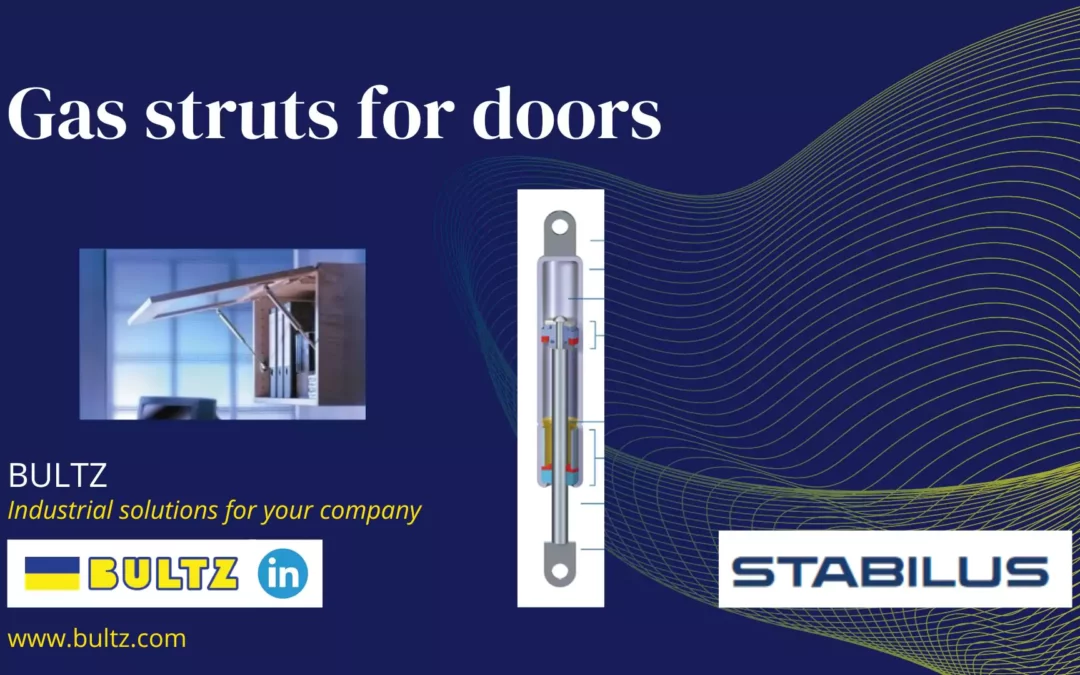Crucial for functionality and convenience in various settings, gas springs for doors have revolutionized the way we interact with doors of all types. In this article, we will delve into the technology behind these devices, their real-world applications, and how they have transformed both the design and operation of doors in a wide range of environments, from homes to industry.
How do they work
Gas springs, also known as gas dampers or gas struts, are devices used to lift and lower doors smoothly and in a controlled manner. Their operation is based on the principle of compressing and expanding a gas, typically nitrogen, enclosed in a sealed cylinder. Here’s how they work when raising and lowering doors:
- Lifting Phase:
- When an initial force is applied to open the door, the gas spring is in its compressed position. The gas inside the cylinder is under pressure.
- As additional force is applied to lift the door, the gas spring gradually expands, releasing the gas through an internal control valve.
- This gas expansion generates a force opposing gravity, aiding in smoothly and controlled lifting of the door.
- The lifting speed can be adjusted by controlling the amount of gas and the resistance in the control valve.
- Lowering Phase:
- When the door is released or a downward force is applied, the gas spring begins to compress once again.
- The gas is compressed in the cylinder, creating resistance that prevents the door from abruptly falling or closing with force.
- The lowering speed can also be controlled by adjusting the gas spring’s resistance.
Gas springs for doors: Applications
Gas springs are used in a variety of applications for lifting doors, including:
- Automobiles: They are used in rear hatches, hoods, and trunks to facilitate their opening and closing.
- Furniture: In furniture like cabinets, foldable beds, and kitchen cabinets to keep doors in open or closed positions in a controlled manner.
- Industrial Machinery: They are employed in industrial machines and equipment, such as cabins for heavy machinery, to securely hold doors and panels in place.
- Glass Doors: In automatic entrances of commercial buildings for smooth and trouble-free operation.
- Garage Doors: In garage door opening systems to facilitate their use.
- Outdoor Furniture: In garden or patio furniture to ensure that doors or lids remain open or closed in windy conditions.
- Medical Equipment: In hospital beds and surgical tables to allow controlled adjustments in height and position.
- Boats and RVs: In boat and RV doors and compartments for easy and secure access.
- Aircraft: In storage compartments and access doors in aircraft for efficient and safe door and panel handling.
- Architecture and Construction: In window and skylight systems that automatically open and close for ventilation and natural lighting.
These are just a few of the many applications of gas springs in lifting doors, and their versatility makes them a popular solution for a wide variety of design and functionality needs.

Why is the Stabilus Lift-O-Mat model suitable for lifting doors? when should one opt for gas springs made of a more durable material, such as stainless steel?
Stabilus is a leading brand in gas springs and is commonly used for lifting doors due to its performance and durability. Moreover, it is particularly suitable in situations where a smooth and controlled door movement is required, as these pistons are not lockable during the piston’s travel. This means they offer a seamless and continuous operation throughout the entire range of motion, which can be crucial in many applications. However, in some cases, it may be necessary to opt for stainless steel gas springs or another more robust material.
Stabilus Lift-O-Mat:
- Reliable Performance: Stabilus Lift-O-Mat pistons are designed for smooth and dependable operation. They provide controlled damping and a constant force in door movement.
- Variety of Sizes and Forces: They are available in a wide range of sizes and forces, making them suitable for different applications and door weights.
- Durability: Lift-O-Mat pistons are typically durable and corrosion-resistant, making them ideal for most indoor and some outdoor applications.
Stainless Steel Gas Springs (Lift-O-Mat Inox):
However, in situations where conditions are more extreme or greater resistance to corrosion is required, opting for stainless steel gas springs is appropriate:
- Outdoor Environments: For doors that will be exposed to severe weather conditions such as rain, snow, salinity, or other corrosive factors, stainless steel gas springs are a suitable choice due to their high corrosion resistance.
- Chemical or Industrial Environments: In settings where corrosive chemicals are present or where doors will be subject to high exposure to corrosive substances, stainless steel gas springs provide added protection.
- Extreme Loads or Continuous Use: For applications where doors are exceptionally heavy or are opened and closed with very high frequency, stainless steel gas springs may be more suitable due to their additional strength.
CONTACT US
RELATED POSTS

